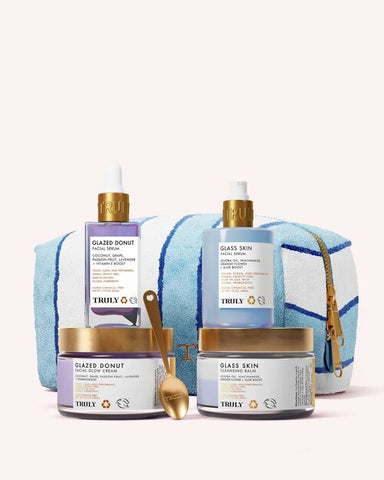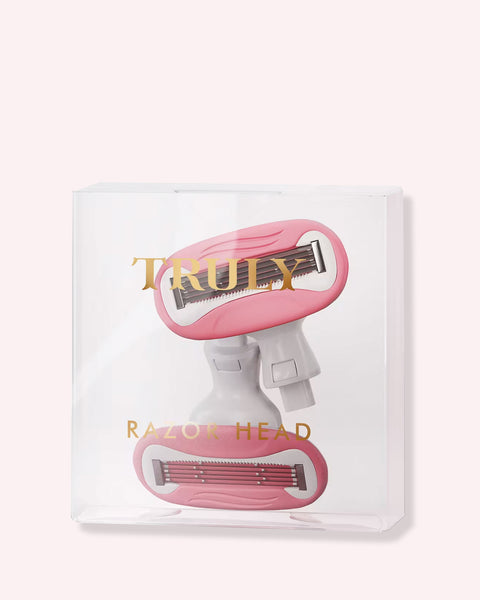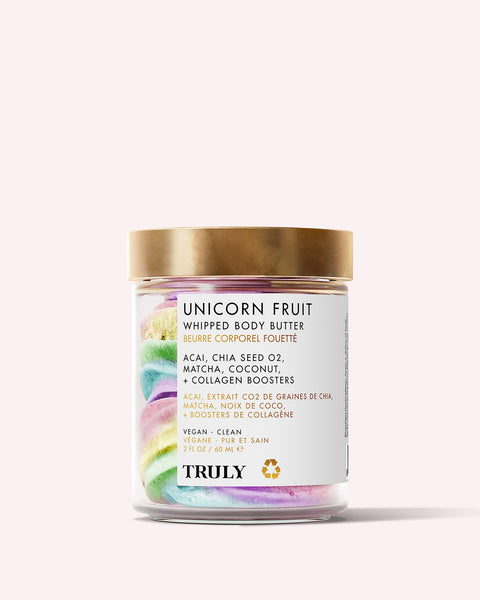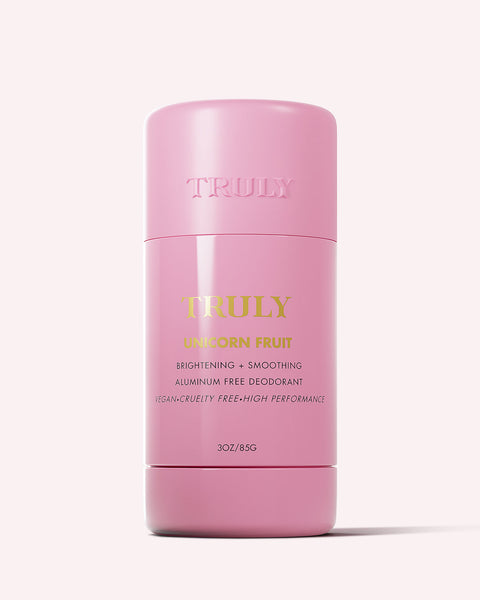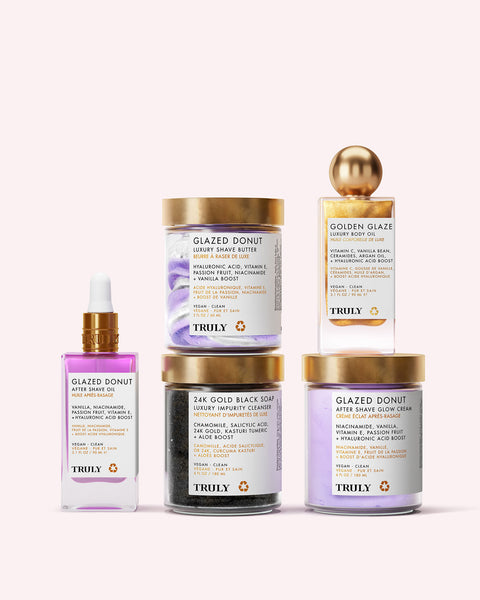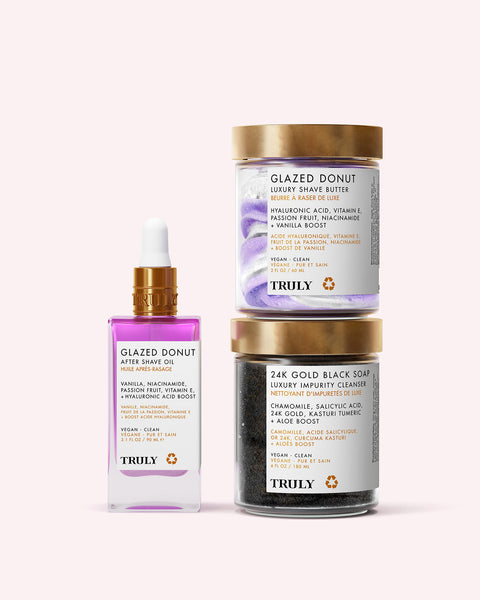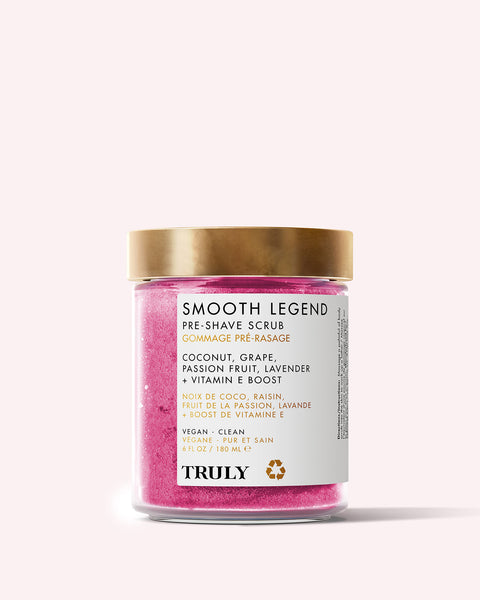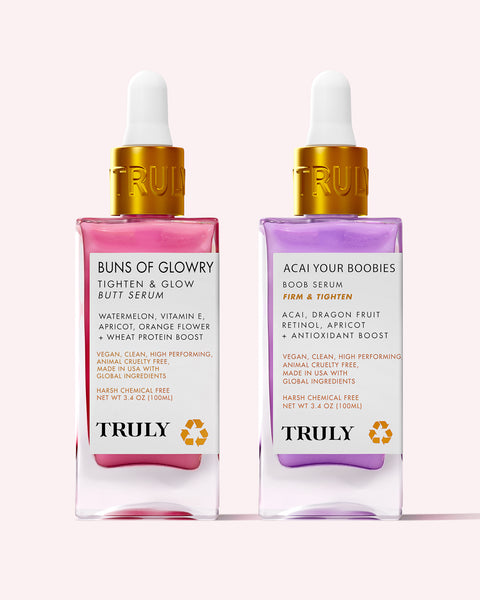How to Tell If You Have Oily or Dry Skin in 2 Steps

Is my skin oily or dry? It's easy to get confused, but here's how to tell if you have oily or dry skin.
Sometimes your skin looks shiny. Other times it feels dry and flaky. Knowing your skin type can greatly impact your skin. When you’re using the right skincare products for your skin type, you can efficiently control symptoms such as dryness, itchiness, and oiliness.
So, how do you know if you have oily or dry skin? Ahead, we show you exactly how to determine your skin type and the best routines for healthy, glowing skin.
How to Tell if You Have Oily or Dry Skin
Any dermatologist will tell you, knowing your skin type matters. A lot. If you know what skin type you have, you can better cater to your skin's specific needs which will lead to a visibly improved appearance.
Misunderstanding your skin type, on the other hand, has visible results too. For instance, if you’re using a rich, creamy cleanser designed for dry skin when you actually have oily skin, you could wind up with a flareup of breakouts. And vice versa: using cleansers for oily skin can strip dry skin of its natural oils, leaving you even more parched.
There are two ways to determine your skin type.
The Wash and Wait Method
Wash your face with a gentle cleanser and pat dry. Wait 30 minutes. Then inspect your skin for signs of shine, dryness, and tightness. If your skin appears shiny or greasy, you likely have oily skin. If it feels dry, tight, or flaky, you probably have dry skin.
And if the shine only appears on your T-zone, you most likely have combination skin. Does your skin feel comfortable and hydrated after cleansing? You probably have normal skin.
The Blotting Sheet Method
After cleansing your face with a mild cleanser, pat skin dry and wait for 30 minutes. Press blotting sheets on different areas of your face, then hold the sheets up to the light to determine how much oil is visible.
If you see an abundance of oil on the sheets, you have oily skin. If the sheets picked up little to no oil, you probably have dry skin. And if the sheets show a small amount of oil from your T-zone, that means you have combination skin.
You Have Oily Skin if...
• Your skin looks shiny and greasy.• You have enlarged and visible pores.
• Acne, blackheads, and whiteheads are a common occurrence.
• Your makeup tends to slide off or disappear quickly.
• Your skin feels oily shortly after cleansing.
You Have Dry Skin if...
• Your skin feels tight, especially after cleansing.• You experience flaking, rough patches, or peeling.
• Fine lines and wrinkles appear more noticeable.
• Your skin appears dull and lacks radiance.
• Your skin is often itchy or irritated.
You Have Combination Skin if...
• Your T-zone (forehead, nose, and chin) is oily, while your cheeks are dry.
• You have larger pores in the oily areas and smaller pores in the dry areas.
• Breakouts and dry patches happen simultaneously.
• Your skin feels tight in some areas and greasy in others.
• Your skincare products work differently on different parts of your face.
Now you know how to tell if you have oily or dry skin here’s the best routine and the right products for the different skin types.
Best Skincare Routine for Oily Skin
Excess oil can lead to clogged pores, but the upside is that oily skin tends to appear younger and more supple due to its natural moisture, which helps reduce fine lines.
To maintain healthy and balanced oily skin, regular gentle exfoliation is essential. This promotes cell turnover and prevents pore congestion while improving skin tone and skin texture.
Oily skin can be susceptible to post-inflammatory hyperpigmentation (PIH), aka, dark spots after breakouts. Exfoliation helps to fade these spots by stimulating fresh skin cells. For those prone to acne, using exfoliators with antibacterial properties can accelerate healing and prevent future breakouts. Here’s a routine you can try.
Step 1: Cleanse
Twice a day (morning and night) use a gentle cleanser to remove excess oil without stripping the skin. Exfoliating cleansers are great for oily skin because they remove dead skin cells and unclog pores, preventing blemishes and excess sebum.
Look for cleansers containing salicylic acid or charcoal to help control oil and prevent pimples, like Truly's 24K Gold Black Soap Impurity Cleanser. Avoid harsh soaps as they can cause the skin to produce excess sebum.
Step 2: Treat
After cleansing, apply a lightweight serum containing niacinamide or vitamin C to control oil production and brighten the skin, like Truly's Glass Skin Facial Serum.
In the evening, use a serum with retinol or glycolic acid to help with cell turnover and keep pores clear. Truly's Vegan Collagen Facial Serum is an excellent choice.
Step 3: Moisturize
Yep, even oily skin types need to moisturize morning and night. Moisturizing keeps your skin’s oil levels balanced. If you don’t moisturize, your skin will compensate for the lack of moisture by producing more oil—resulting in increased shine.
Opt for an oil-free, non-comedogenic moisturizer to hydrate your skin without clogging pores. Look for ingredients like hyaluronic acid, niacinamide, vitamin E and jojoba oil that hydrate without adding oil. We suggest Truly's Glazed Donut Facial Cream.
Step 4: Sun Protection
Always apply a broad-spectrum sunscreen with at least SPF 30 before leaving your house. You want to choose a sunscreen that is specifically designed for oily skin. Look for mattifying formulas to help control shine throughout the day.
We Recommend
Truly’s Glass Skin Set
SHOP NOW
Get the glass skin effect—instantly. Minimize shine with this 2-step skincare routine that’s perfect for oily skin. It features a cleansing balm + serum infused with niacinamide and jojoba oil to balance oiliness, reduce shine, and shrink your pores.
Truly’s Super Star Routine
SHOP NOW
Stubborn shine and breakouts? Super Star Routine’s got you covered. It features a face mask, serum, and pimple patches formulated with retinol and vitamin C to leave skin visibly clearer and mattified.
Truly’s Bodne Routine
SHOP NOW
If you’ve got oily, acne-prone skin, you’ve got to try this breakout-busting routine. It’s so good, the Cherry Jelly Cleanser was voted the “best bacne cleanser” by Teen Vogue. Packed with chemical exfoliants like salicylic acid, glycolic acid, and mandelic acid, this 5-step set cuts through oil and impurities to deep clean pores, revealing clearer skin while preventing future blemishes.
Best Skincare Routine for Dry Skin
Dry skin can look and feel dry, tight, and itchy, with noticeable flakiness. Dry skin occurs when the sebaceous glands don’t produce enough oil (sebum) to lubricate the skin adequately. In response to this lack of moisture, the skin may sometimes compensate by producing more oil, which can potentially lead to clogged pores and breakouts despite the overall dryness.
The best way to deal with the dry skin type? Gentle cleansing, exfoliation, and moisturising with hydrating ingredients like hyaluronic acid, argan oil, jojoba oil, and shea butter. Here’s a routine you can try.
Step 1: Cleanse
Dry skin needs as much moisture as it can get—starting with your daily cleanser. Use a cleansing balm or milky cleanser to remove impurities without stripping the skin of its natural oils, like Truly's Glass Skin Cleansing Balm.
Avoid harsh soaps, foaming cleansers, and hot water, as they can further dry out the skin.
Step 2: Gently Exfoliate
To remove the buildup of old, dull cells, exfoliate twice a week with a gentle, chemical exfoliant. Not only will the skin appear instantly brighter and smoother, but skincare products like your hydrating serums and lotions will penetrate deeper into the skin (and ultimately work harder!).
Step 3: Treat
One of the best ways to nurture this type of skin is with a potent, hydrating serum infused with hyaluronic acid, coconut, ceramides, or vitamin E. After cleansing, pat a couple of drops of serum into your skin for instant relief from dry, itchy skin.
One of our favorites for dry skin is Truly's Glazed Donut Facial Serum.
Step 4: Moisturize
All skin types need to moisturize, especially dry skin. Choose a rich, emollient moisturizer to provide deep hydration and create a protective barrier to maintain soft, healthy skin.
Look for moisturizers with shea butter, squalane, or ceramides. Don’t forget to apply moisturizer while your skin is still damp to lock in moisture.
Step 5: Sun Protection
The final step of your skincare routine should always be sunscreen. Before leaving your house, apply a broad-spectrum sunscreen with at least SPF 30. Choose a hydrating sunscreen infused with nourishing ingredients like aloe vera, vitamin C, and vitamin E.
We Recommend
Truly’s Glazed Donut x Glass Skin Skincare Set
SHOP NOW
Two cult-fave skincare sets, combined, to resolve all your skin concerns at once. Dryness? Check. Shine? Check. Redness and irritation? Check? Dark spots? Check. The Glazed Donut and Glass Skin lines are designed to give you the clear, luminous skin of your dreams—thanks to niacinamide, jojoba oil, vitamin E, and grapeseed oil.
Birthday Sex Luxury Body Oil Bundle
SHOP NOW
Buff, shave, and shimmer with this deluxe trio. It features an exfoliating cleanser, our brand new body shimmer oil, and a FREE luxury shave butter. Powered by an ultra-hydrating blend of hyaluronic acid, argan oil, niacinamide, and shea butter for soft, dewy skin.
Is My Skin Dry or Oily?
Knowing your skin type gives you a great advantage. For starters, you’ll be able to manage symptoms like dryness, shine, and flaking. Plus, you’ll be able to see the visible effects such as smoother, softer skin and fewer breakouts.
How to tell if you have oily or dry skin? The best way to determine your skin type is with the wash and wait method and the blotting paper method. Once you know your skin type, you can invest in products that are better tailored to your skin so you can alleviate dryness, redness, irritation, and shine.
Still need help finding the best routine for your skin concerns? Or just want to discover new products that will transform your skin? Take the Truly Quiz and we’ll match you with the best products for your skin.









